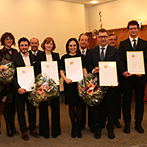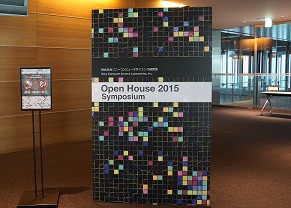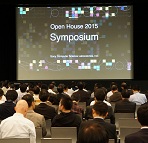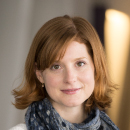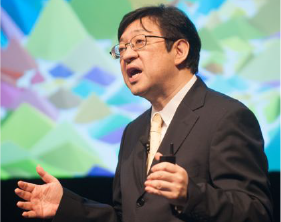
アフリカ諸国およびバングラデシュにおいて、ソニーCSLが実施している自然エネルギーを利用した実証実験の模様をまとめたビデオが紹介された後、アネッタ・ヴェルツは自身の研究テーマである、電力を柔軟に共有することを可能とするピアツーピア電力網(オープンエネルギーシステム)についての講演を行いました。従来の集中型AC電力網では、発電所から各家庭への送電は一方向に限られるため、例えば送電網のどこかでトラブルが発生した場合、大規模な停電が起きるなど、構造上のリスクがあることを指摘した上で、オープンエネルギーシステム(OES)コンセプトの潜在的優位性について述べました。OESでは、複数のマイクログリッド(小規模分散型電力システム)が発電および蓄電、そして電気を直流(DC)のまま双方向に送り出して融通し合うことができます。ヴェルツはOESアプローチの実証モデルとして、沖縄科学技術大学院大学(OIST)キャンパス内の教職員住宅エリアで行っているパイロットプロジェクトを取りあげました。そして最後に、世界の人々、特に電力供給が不安定な地域や無電化地域で暮らす人々のライフスタイルを向上させるために、ボトムアップによる低コスト分散型電力網がもたらす恩恵について述べました。

Following a short video about Sony CSL's contribution to off-grid energy solutions in African countries and Bangladesh, Annette Werth spoke about her vision of a peer-to-peer electricity grid by means of which energy can be flexibly shared as required. She drew attention to the vulnerability of a conventional centralized AC grid, where energy flows one way from a power plant to individual households, and where a breakdown at any stage can lead to a significant power outage. She then outlined the potential advantages of Open Energy Systems (OES), a vision of microgrids generating, storing and bidirectionally sharing DC energy. As a practical example she described a pilot project in Okinawa, where faculty housing at the Okinawa Institute of Science and Technology (OIST) is showcasing the feasibility of an OES approach, and she concluded by underlining the great basic-lifestyle benefits of an affordable, bottom-up, distributed electricity grid, especially for those who live in parts of the world where most people have little or no access to electricity.
